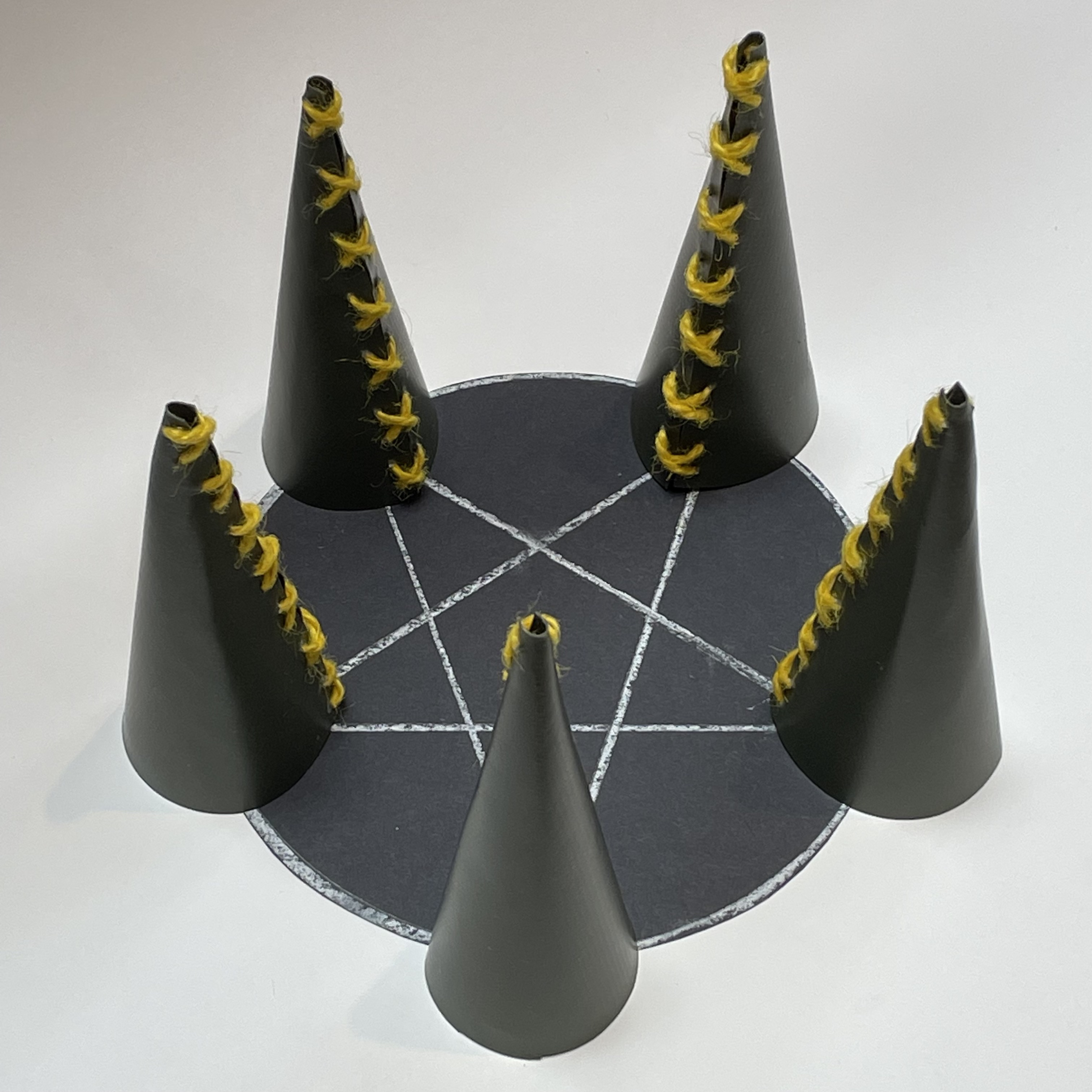Nuclear Information Centre
Trident Pentagram (2023)
[NIC/NW/007]
Nuclear symbolism and the interwoven forces of proliferation, disarmament and the nuclear status-quo abound in this suitably ambiguous and mysterious object, seemingly made from black card, white chalk, yellow string and khaki PVC.



The UK’s submarine-based nuclear “deterrent” is currently built around the Trident II D-5 missile system. The UK designs and builds its own warheads but the missiles themselves are leased from the US. Each missile can carry a maximum of 8 warheads although it is generally thought that up to 5 warheads are deployed per missile on board whichever Vanguard class submarine is out on active patrol, helping to keep us all safe 24 hours a day, 365 days a year.
In 2021, after decades of incremental reductions, the UK government chose to increase the cap on the number of warheads it can actively maintain to 260. This represented an increase of around 40% on the previously permissible number.
The UK also remains a signatory to the international Nuclear Non-Proliferation Treaty (NPT) which came into force in 1970.
Trident Pentagram is presented as a single group of 5 warheads, collectively bound by powerful, unseen forces. It could also be scaled up to include the full potential complement of 260 warheads, deployed over 52 individual pentagrams. The UK may or may not have 52 Trident missiles at present but either way the symbolism is there.
The Khaki PVC material references the military-style trailer coverings of the warhead carrier vehicles as they traverse the UK’s nuclear weapons transport triangle in regular convoys between AWE Aldermaston, AWE Burghfield and RNAD Coulport in Scotland. Additionally, the decision to stitch the warheads allows for their easy disassembly, should the decision be taken to do so.
The colour yellow is infused with nuclear associations. We see it, for example, in the globally recognisable black & yellow radiation warning symbol and as yellowcake, a common form of uranium oxide from which civil and weapons grade uranium is produced. In the late 1970s, a yellow cross symbol was deployed as a protest marker against a proposed nuclear waste geological disposal facility (GDF) at Gorleben in Germany.
Trident Pentagram is also inspired in part by US artist Barbara Donachy’s powerful and thought-provoking, mid-1980s installation, Amber Waves of Grain which comprised a hand-made, miniature representation in clay of the entire US nuclear arsenal at the time. As we are currently witnessing a return to proliferation and posturing by existing nuclear weapons states, Donachy’s work still seems as relevant as ever.
Update: February 2024.
Trident Pentagram now also operates 24 hours a day, 365 days a year in a clay-based format. In this version the Bentonite clay warheads function as an engineered barrier to absorb any contamination arising from decommissioned fissile cores should they ever be destined for a future geological disposal facility. A GDF is engineered as a passive system to contain radioactive waste. To what extent are Trident warheads engineered as passive devices?


Information last updated: Fri 23 Feb 2024
Back